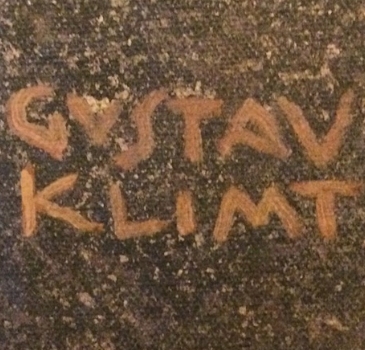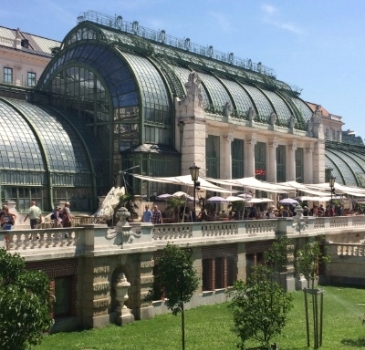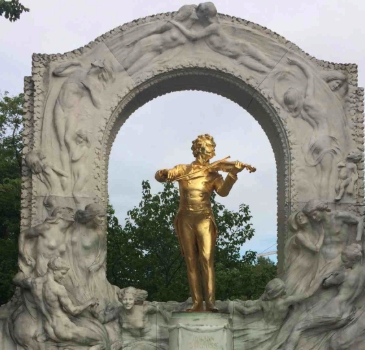Itinerary
On this comprehensive 2.5-hour private tour, we will showcase the major works of Otto Wagner, the visionary pioneer of modern urbanism in Vienna.
At the turn of the 20th century, as Vienna’s population expanded rapidly, Otto Wagner, the master of Art Nouveau, was tasked with shaping the city’s growth. This private Art Nouveau-focused tour offers deep insights into his pivotal role in Vienna’s history and the Secession movement.
Otto Wagner envisioned a modern city, designing metro lines to seamlessly connect the suburbs with the city center along the Ring. Renowned for prioritizing materials and functionality, his work stood in stark contrast to the ornate tendencies of many architects of his time.
As in many European cities of the time, the old fortifications surrounding Vienna’s medieval city center had become obsolete, and redevelopment pressures were immense. These feudal-era walls were replaced by institutions symbolizing the new bourgeois power—such as the University, Parliament, and Museums—along with upscale residential blocks.
This transformation provides the context to understand Otto Wagner’s pivotal role and innovative vision. Among his many contributions, some consider his masterpiece of the era to be the Postal Savings Bank (Postsparkasse), constructed between 1904 and 1906. The building is a testament to Wagner’s characteristic focus on linearity, smoothness, and precise design. Its exterior features marble cladding secured by exposed aluminum fastenings, while the interior, remarkable for its airy elegance and use of exposed metal and glass, is a striking example of modernist ingenuity. The interior can be visited on weekdays, offering a closer look at Wagner’s genius.
Die Zeit described the Postsparkasse as a work of genius, noting that Wagner aimed to create a building that was both functional and beautiful, a testament to his belief that wrote in these words “…a symphony in white, black, and grey, but particularly one guided by expediency. Light, air and intelligent use of space…everything that was missing from the old premises should be here in abundance…“.
Other highlights that may be visited during the tour are:
- Karlsplatz Underground Stations (Otto Wagner Museum)
- Danube Locks
- Wienfluss Embankment
- Otto Wagner Houses Wienzeile
The focus of this private tour is the remarkable works of Otto Wagner, offering a comprehensive journey into the heart of Vienna’s fin de siècle era. Combining insights into history, architecture, decorative arts, culture, literature, and music, this thematic experience will transport you to the vibrant times of the Secession movement. Through Wagner’s masterpieces, you’ll gain a deep understanding of his pivotal role in Art Nouveau and the development of modern urbanism.
This private tour provides an in-depth exploration of Wagner’s architectural legacy, revealing the design elements and aesthetic philosophy behind his elegant, turn-of-the-century style. You’ll also uncover the political and cultural context of a movement that boldly rejected Austria’s imperial past, showcasing Wagner’s vision of a modern city.
Tailored to your interests
Where the private tour Begins and Ends
Starting point is in front of the McDonald’s in Rotenturmstrasse near Schwedenplatz (Vienna 1010), and the private tour will end in front of the Otto Wagner Houses Wienzeile.
Exclusions
This is a walking private tour and it is not required the use of public transport. If during the private tour you want to use a public transport like a taxi or bus, the fare is not included.
Entrance fees to museums or houses visited during the tour are typically not required.
Food and drinks.
Additional Information
About Otto Wagner - Secession in Vienna
Otto Wagner was born near Vienna, in the city of Penzing in 1841. He studied at the Viennese Technische Hochschule, at the Berlin Bauakademie and at the Academy of Fine Arts.
He designed a new plan for the city of Vienna in 1890 which included a urban railway network, maintaining the classic urban monumentality of its beginnings but adopting a modern and functional construction. The various railway station buildings exhibited a decorative style very close to the Viennese Secession School to which the architect belonged at the time.
In 1894 he was professor and supervisor at a special school of architecture within the Academy of Fine Arts.His told students to learn and develop an architecture based exclusively on the new materials and modern construction methods.
Throughout he exerted a great influence on younger architects such as Adolf Loos or J.M. Olbrich and from 1898 he began the stylistic renewal that was a shock in his country and all over Europe.
In his last works he dispensed with almost all the adornments and used simple materials and forms, as in the Church of Saint Leopold in Steinhof, or the Post Office Savings Bank in Vienna, showing a simple but effective mix of plane, space and elements.
Otto Wagner died in 1918 in Vienna.
Otto Wagner’s visionary U-Bahn stations:
They are iconic examples of Viennese Art Nouveau. His designs seamlessly blend functionality with artistic expression, creating a timeless aesthetic that still captivates today.
The Karlsplatz station, with its distinctive pavilions, is a prime example of Wagner’s innovative approach. These stunning structures, adorned with intricate details and elegant lines, have been meticulously restored and now house a museum dedicated to the architect’s work.
Another highlight is the Imperial and Royal Highest Court Pavilion in Hietzing. This private station, built for the Emperor Franz Joseph, showcases Wagner’s masterful use of form and interior design. The opulent waiting room, with its gilded mahogany paneling and stunning artwork, offers a glimpse into the luxurious world of the Habsburg monarchy.
When exploring these architectural gems, be sure to pay attention to the intricate details, from the ornate ironwork to the colorful mosaics. These stations are not only functional transportation hubs but also cultural landmarks that reflect the innovative spirit of Vienna’s past.
Read this article to know why Vienna is The Perfect Destination for Culture and History Lovers.
Art nouveau – Secession in Vienna:
Vienna had a higher density of conservative nobility than Budapest, the other co-capital of the Austrian-Hungarian Empire, and this fact delayed the entrance of this new artistic movement in Vienna. It was not until 1896 that the painter Gustav Klimt and a number of other artists quit the conservative Künstlerhaus and founded a new art association called Secession, a name used by a popular building completed in 1898 and used by many of the members of this movement, artists like Otto Wagner or Josef Hoffman.
This private, special theme tour is suitable for those who would like to immerse in the atmosphere of Vienna 1900, when it was the cultural capital of Europe, like Florence was around 1500. In the year 1900 the City of Music was the seventh largest city in the world. Nowadays the Austrian capital is not in the the list of the “100 largest cities in the world”.



